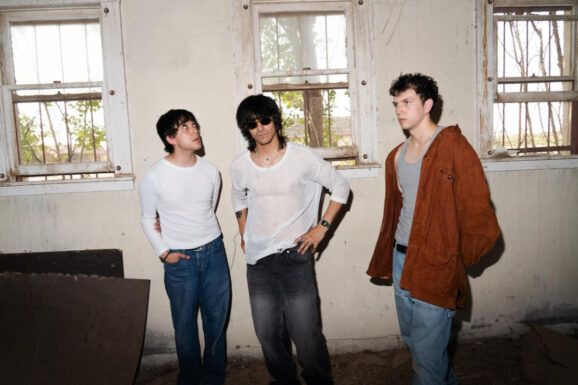Trumpeter Terence Blanchard has widened his scope considerably in the last decade, receiving two Grammy nominations for his film scores and as a two-time opera composer whose opera Fire Shut Up In My Bones will open the 2021-22 season of The Metropolitan Opera in New York City on September 27, making it the first opera by a black composer in the 136-year history of the Met. So, it is not surprising to see the six-time Grammy winner in his 30th year of recording as a leader, to take his longtime E-Collective band into the studio with the acclaimed Turtle Island Quartet. Blanchard describes the results as akin to a chamber jazz ensemble. The project was initiated before the onset of the pandemic at UCLA where Blanchard is on faculty as a gesture of gratitude toward Wayne Shorter. The album is essentially about compositions, both Shorter’s and Shorter’s influence on those of Blanchard.
Blanchard gives his band plenty of room to improvise and to arrange the compositions. E-Collective members are pianist Fabian Almazan, guitarist Charles Altura, bassist David Ginyard, and drummer Oscar Seaton. Turtle Island Quartet is led by violinist/artistic director David Balakirshnan and includes violinist Gabe Terracciano, violaist Benjamin von Gutzeit and cellist Malcolm Parson. There are five Shorter tunes combined with originals from Blanchard, Altura, Balakrishnan of Turtle Island, and two by Ginyard. Almazan does the arrangements of Shorter’s “The Elders” and “When It Was Now.”
The album begins with the title track, penned by Ginyard and one that was supposed to appear on the last album. However, this gave the composer a chance to write arrangements for a string quartet. It begins quietly and mysteriously with Almazan’s gentle piano but takes shape with the power of the E-Collective and the enveloping shrouds of the strings which Blanchard easily pierces with his synth-fueled trumpet. Shorter’s “The Elders” in the Almazan arrangement is another dramatic tune, one without much improvisation but some playful and edgy solos that take on a free jazz quality, building into so much intensity that Blanchard cut the piece in half, reprising with “More Elders” to close the album.
Blanchard arranged one of his favorite Shorter compositions, “Fall,” which originally appeared on Miles Davis’s 1968 Nefertiti. As he was studying the piece, Blanchard realized that the melody was in the bass line. Yet, as with the original, this is a reflective, gorgeous piece showcasing Blanchard’s emotive trumpet set against Almazan’s shimmering piano and lush strings. That precedes the leader’s one original, the album centerpiece “I Dare You” with its Turtle Island Quartet introduction, and terrific trap work from Seaton presaging turbulence and beautiful chaos from the E-Collective while Blanchard soars above the fray, issuing a warrior-like battle cry. The title comes from a classic Wayne Shorter statement in an interview where he described jazz as “I Dare You.”
The requisite calm is restored with two rather brief and seemingly odd pieces composed by Ginyard, the Intro for the Turtle Island Quartet only with the E-Collective joining on the two-and-half minute “Envisioned Reflections,” like Ginyard’s title track, emitting a haunting, mysterious aura. This leads into the Turtle Island Quartet only piece, “The Second Wave,” composed by Balakirshnan with more of a bluegrass stomp feel than jazz but one that goes through several dramatic, energetic changes across its almost 11 minutes. Apparently, Blanchard wanted to hear with the quartet would deliver in their unrestrained trademark way. Subsequently, a video shoot of this tune was made for this fall’s forthcoming Hardly Strictly Bluegrass Festival.
Almazan’s other arrangement of a Shorter piece comes with “When It Was Over,” introduced with continuity by the string quartet before we hear Blanchard’s trumpet and the pulsating rhythms of the E-Collective propelled by the Seaton and Ginyard tandem, infused with Altura’s and Almazan’s sparkling fills for a funky, buoyant ride.
Altura, one of today’s more inventive guitarists, penned and arranged the synth-oriented “Dark Horse,” which takes an ominous, serious tone but is rich with harmonics and features strong soloing form Blanchard while proving also to be a launching pad for the composer’s wild solo near the end of the piece. The string quarter sits this one out.
The album closes with more nods to Shorter as Blanchard arranged “Diana,” written for the daughter of Flora Purim and Airto Moreira from Shorter’s 1974 album Native Dancer. The strings begin and the E-Collective later joins to deliver the album’s most gorgeously rendered piece, as if one if just floating on billowing clouds. The reprise “More Elders,” closes in an angular, obtuse fashion in comparison with the E-Collective in full flight.
There are not many musicians who could present an album with such a wide sonic palette. That is a Wayne Shorter characteristic that Blanchard and these two ensembles deliver on brilliantly.








